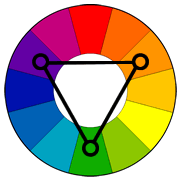
Aimee Erickson 이란 화가가 "예술가를 위한 외광 기법: 자연광에서 그림을
그리는 원리 및 방법"에서 다양한 조명 효과를 포착하는 방법을 설명하고
연습하는 방법을 이야기하고 있는데 흥미가 있는 내용이라 여기 옮긴다.
몇가지는 한번 시도해볼 일이라는 생각을 하면서 ...
=============================================================
아이디어가 없다면 어떻게 해야 할까요?
덜 해보세요. 범위의 일부 측면을 제한하면 창의성이 촉발되는 효과가 있습니다.
물리적인 한계, 팔레트나 문체적 접근 방식의 한계, 사용하는 도구 등을 도입할 수 있습니다.
• 자주 사용하지 않는 손으로 그림을 그립니다.
• 피사체를 등지고 그림을 그리고 그것을 보기 위해 돌아설 수 있는 횟수를 제한하십시오.
• 시간 제한을 설정하십시오. 20분 이하로 시도하고 이에 맞게 결정하는 횟수를 줄이십시오.
• 소규모로 일하십시오. 큰 캔버스의 구석에 작은 상자를 표시하고 미니 그림을 그려보세요.
• 작은 캔버스에 하나의 큰 브러시를 사용합니다.
• 팔레트 나이프나 신용 카드를 사용하여 전체 그림을 그립니다.
• 흑백으로만 작업하십시오.
• 피사체와 관련이 없는 제한된 색깔을 선택하십시오.
• 네 가지 색상으로만 제한하십시오.
• 칠할 아주 작은 것(밝은 조명이 있는 단일 물체 또는 색상 관계)을 그려보세요
• 좀 더 야심찬 것 대신 썸네일과 디자인 스케치를 만드세요.
• 친숙한 주제를 그려보세요.
• 추상적인 색상 연구를 해보세요.
• 세로 브러시 스트로크만 만들거나 가로 브러시 스트로크만 만들거나
모든 대각선 브러시 스트로크를 만듭니다.
• 톤이 있는 캔버스를 사용하고 모든 브러시 스트로크가 서로 닿지 않도록 합니다.
광범위한 브러시 스트로크 사용
아래 그림은 매우 넓은 브러시를 효율적으로 사용하는 방법을 보여줍니다.
저녁 식사 전까지 시간이 거의 없었지만 매일 자작나무를 지나가던 중 그 순간이 왔습니다.
나는 부드러운 강모가 있는 6인치(15.2cm) 너비의 철물점 페인트 브러시를 가지고 있었습니다.
나무 줄기의 복잡한 패턴을 보면서 저는 그 넓은 브러시를 수평 획으로 사용하여
단 한 번의 줄무늬 브러시 스트로크로도 깨진 패턴으로 모든 어둠을 한 번에
넣은 다음 잔디를 추가할 수 있다고 생각했습니다.
그리고 흰 자작나무 껍질을 사용하여 다양한 크기의 나무를 보는 듯한
착각을 불러일으킵니다. 효과가 있었어요!
나는 세부적인 화가가 아닌 경향이 있으며, 자작나무 줄기에 있는 모든 어두운 표시를
가는 붓으로 칠해야 한다면 매우 실망스러울 것입니다.

======================================================================================
In “Plein Air Techniques for Artists: Principles and Methods for Painting in Natural Light,” award-winning artist and respected workshop instructor Aimee Erickson demystifies how to capture a variety of light effects and guides you in strengthening your plein air skills through practice. The following is a brief excerpt:
What To Do If You Don’t Have An Idea
Try doing less. Limiting some aspect of your scope has the effect of sparking creativity. You can introduce physical limitations, limits to your palette or stylistic approach, or what tools you use.
• Paint with your non-dominant hand.
• Paint with your back to the subject and limit the number of times you can turn to look at it.
• Set a time limit. Try twenty minutes, or less, and reduce the number of decisions you make to fit.
• Work small. On a big canvas, mark off a small box in the corner and do a mini painting.
• Use a single big brush on a small canvas.
• Do the entire painting with a palette knife—or a credit card.
• Work in black and white only.
• Choose a limited palette that has no relation to your subject.
• Limit yourself to four colors only.
• Find something very small to paint—a single well-lit object or a color relationship.
• Make thumbnails and design sketches instead of something more ambitious.
• Paint a familiar subject.
• Make an abstract color study.
• Make vertical brushstrokes only, or horizontal brushstrokes only, or all diagonal brushstrokes.
• Use a toned canvas and keep all your brushstrokes from touching each other; then, make an exception.
Technique: Using Broad Brushstrokes
The painting below demonstrates the efficient use of a very broad brush. I had very little time before dinner, but I’d been passing these birch trees daily and the moment had come.
I had with me a 6-inch (15.2-cm) wide hardware-store paintbrush with soft bristles. Looking at the complex patterning on the tree trunks, I figured I could use that wide brush, in a horizontal stroke, to put in all the darks at once, as a broken pattern, maybe even with a single stripey brushstroke, and then add grass and white birch bark to make an illusion of different-sized trees. It worked!
I tend to not be a detail painter, and all those dark markings on the birch trunks would be mighty discouraging if I had to paint them with a rigger.
'그림공부' 카테고리의 다른 글
| ( 그림공부) 그림자를 제대로 표현하기 (0) | 2024.08.02 |
|---|---|
| ( 그림공부 ) 수면에 비친 그림자 그리기-수채화 (3) | 2024.07.17 |
| ( 그림공부 ) 천연모와 인조모 붓의 비교 (3) | 2024.06.19 |
| ( 그림공부 ) How to Keep Your Watercolors Fresh and Loose (0) | 2024.06.07 |
| ( 그림공부) Watercolor: 도박꾼의 매체( Gambler's Medium) (3) | 2024.05.24 |




